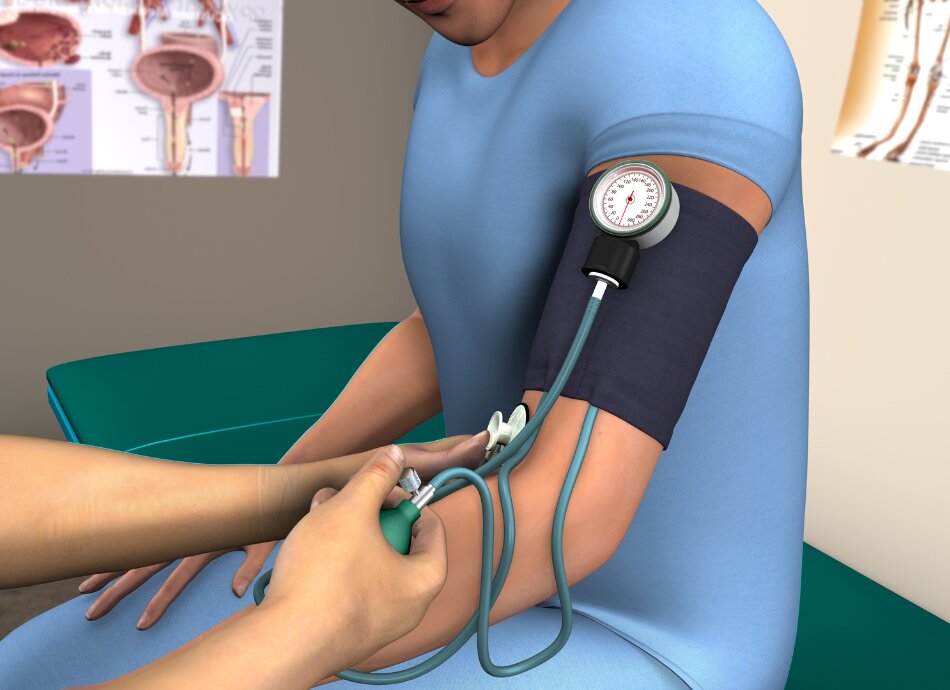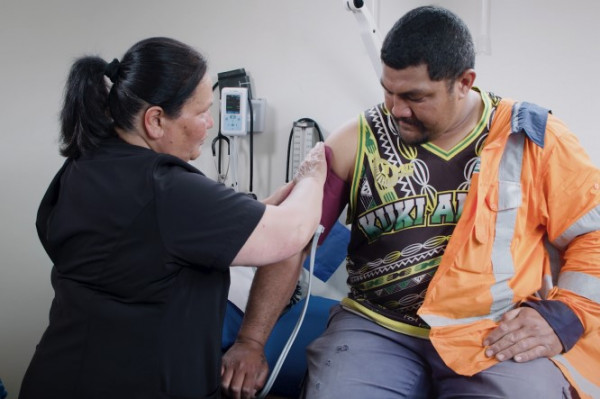Low or no data? Visit zero.govt.nz, scroll down the page then click on our logo to return to our site and browse for free.
Blood pressure (mate pēhanga toto)
Key points about blood pressure (mate pēhanga toto)
- Blood pressure is the force of blood pushing against the walls of your arteries as your heart pumps blood through your body.
- If your blood pressure is high, your heart works harder with every heartbeat. Constant high blood pressure puts extra strain on your heart and blood vessels. This puts you at higher risk of a heart attack, heart failure, stroke, kidney failure and other health issues.
- If your blood pressure is low, it's not usually a problem, but for some people low blood pressure is a sign of an underlying problem.
- You should have your blood pressure checked regularly.
- How often depends on your age, risk factors and general health (see below for details).

Image credit: Health Navigator, NZ
Blood pressure is measured by inflating a cuff around your arm. This is connected to a device that measures pressure. The test is easy and painless.
Blood pressure is measured in millimetres of mercury (which is written as mmHg). Blood pressure readings are a combination of two measurements:
- systolic – the highest pressure against your arteries as your heart pumps. The normal systolic pressure is usually between 110–130 mmHg.
- diastolic – the pressure against your arteries as your heart relaxes and fills with blood. The normal diastolic pressure is usually between 70–80 mmHg.
High blood pressure is often called a ‘silent killer’ because for most people, there are no symptoms. This means many people are unaware they have high blood pressure.
It is important that every adult have your blood pressure checked regularly. The age you are advised to start having heart and diabetes checks depends on your age, ethnicity and other risk factors.
| Risk factors | Age to start having heart (and diabetes) checks | |
|---|---|---|
|
If you have no known risk factors |
Men: 45 years Women: 55 years |
|
|
If you are Māori, Pasifika or South Asian1 |
Men: 30 years Women: 40 years |
|
|
If you have the following risk factors:
|
Men: 35 years Women: 45 years |
|
|
If you have diabetes (type 1 or 2) |
As part of your yearly diabetes review | |
|
If you have schizophrenia, major depressive disorder, bipolar disorder or other severe mental illness |
25 years | |
|
||
If your blood pressure is high, read more about high blood pressure(external link).
If your blood pressure is low, read more about low blood pressure(external link).
What is blood pressure?(external link)(external link)(external link) NHS, UK
Watch, learn and live – blood pressure(external link)(external link)(external link) American Heart Association
Resources
Blood pressure information sheet(external link)(external link)(external link) Heart Foundation, NZ, 2019 English(external link)(external link), te reo Māori(external link)(external link), Tongan(external link)(external link), Chinese (traditional)(external link)(external link), Hindi(external link)(external link), Korean(external link)(external link)
Cut the salt(external link) [PDF, 255 KB] Auckland DHB, NZ, 2013 English(external link) [PDF, 255 KB], Chinese(external link) [PDF, 1.1 MB]
Managing high blood pressure(external link) Heart Foundation, NZ, 2023 English(external link), Hindi(external link), Chinese(external link), Korean(external link)
24 hour blood pressure monitoring(external link)(external link) Heart Foundation, NZ
References
- Managing your risk(external link)(external link)(external link) Heart Foundation, NZ
- Blood pressure information sheet(external link) Heart Foundation, NZ, 2019
See our page Blood pressure (high) for healthcare providers
Credits: Healthify editorial team. Healthify is brought to you by Health Navigator Charitable Trust.
Reviewed by: Dr Hari Talreja, Specialist Renal and Hypertension Services, Auckland
Last reviewed:
Page last updated:






